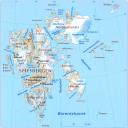I’ve been a nut about remote islands ever since I was a kid. I would pore over maps and spin the globe looking for every remote place I could find and then try to look things up about it to see what I could learn.
Unfortunately, growing up in the 60’s well before the internet, there was not very much around. If the encyclopedia in our house didn’t having anything and the local library didn’t, then that was it – dead end – no information available.
Places like Kerguelen and Bouvet were my friends for a very long time before I actually got to know much about them. I had a pen pal in Tasmania in 1959 for a year or so.
Since then, I’ve actually been to a few of these islands such as Juan Fernandez, Easter, Pitcairn, Ducie and Henderson and, with luck, I’ll set foot on a few more before I’m done.
But, that’s not why I’m writing this piece and I’ve only told you all of this to provide some general background so you’ll have a sense of how I might have come up with the information. 
This piece is about the Svalbard Archipelago and The Treaty of Svalbard and what it means to the citizens of 39 countries. if that’s not obscure enough for you, please raise your hand now – you have permission to leave.
– – – – – – – – – – – – – – – – – – – –
In 1925, the League of Nations Treaty of Svalbard came into effect. It was called, “Treaty between Norway, the USA, Denmark, France, Italy, Japan, the Netherlands, Great Britain and Ireland and the British Overseas Dominions and Sweden with regard to Svalbard”.
Nice, you say? Well, don’t laugh yet.
You see, the Svalbard Islands, which are north of Norway in the arctic, are one of the very few places in the world, which are truly international territory. Read the following to get the drift:
Svalbard is part of Norway
The treaty establishes Norway’s full and undivided sovereignty over Svalbard. Svalbard is part of the Kingdom of Norway, and it is Norway that ratifies and enforces the legislation that is to apply for the archipelago. Nevertheless, the treaty does include some conditions restricting the enactment of Norwegian sovereignty, and Norwegian authorities are required to see to it that Norwegian legislation and administration respect these conditions.
Non-Discrimination
Citizens and companies from all treaty nations enjoy the same right of access to and residence in Svalbard. Right to fish, hunt or undertake any kind of maritime, industrial, mining or trade activity are granted to them all on equal terms. All activity is subject to the legislation adopted by Norwegian authorities, but there may be no preferential treatment on the basis of nationality.
Parties to the Treaty
A total of 39 countries are registered as parties to the Svalbard treaty: Afghanistan, Albania, Argentina, Australia, Belgium, Bulgaria, Canada, Chile, Denmark, the Dominican Republic, Egypt, Estonia, Finland, France, Greece, India, Iceland, Italy, Japan, China, Monaco, the Netherlands, New Zealand, Norway, Poland, Portugal, Romania, Russia, Saudi Arabia, Spain, the UK, Switzerland, Sweden, South Africa, Germany, Hungary, the USA, Venezuela, Austria.
– – – – – – – – –
Postscript: I don’t want to make it sound like anyone can just throw some clothes and a warm coat into a rucksack and take off to Svalbard to live. While the Norwegian government cannot restrict access to Svalbard according to one’s nationality (for those from the 39 signatory nations), it can and does impose rules for residence in Svalbard that affect everyone equally. These rules are quite strong and are intended to protect the environment. You can read about them here: ➡
Given the harshness of the climate, the limited economic opportunities there and the strong regulations about what can and cannot be done, it could be quite difficult to relocate to Svalbard unless you had a lot of financial resources and a strong desire to do so.
– Thanks to Ingunn at the Spitsbergen Airship Museum for much of the information I used to write this piece.